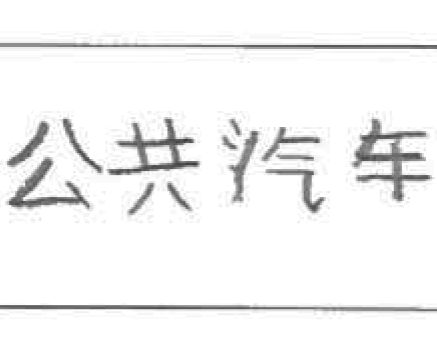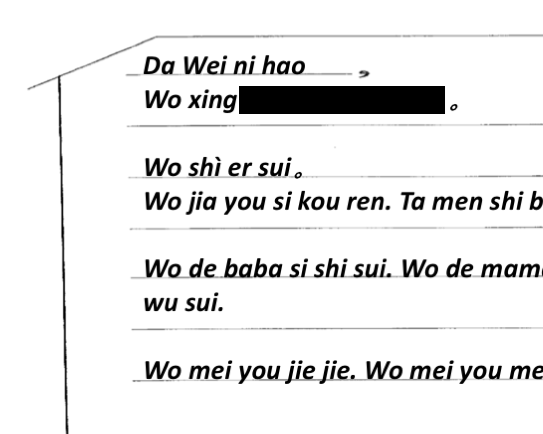Languages: Chinese - Satisfactory - Years 5 and 6
Portfolio summary
This portfolio of student work shows that the student can use spoken and written (WS3) Chinese to initiate and maintain interactions (WS1, WS2). The student describes and gives information WS2) about self (WS2, WS4), their preferences, environment, experiences and interests (WS1), The student uses simple questions and seeks clarification. The student accesses information from a range of print and digital resources (WS3) and summarises key points in order to inform others (WS2) and organises activities. The student engages with a range of imaginative texts. The student uses intonation and stress to engage audiences (WS1) and participants. The student translates everyday expressions (WS2, WS3) and uses context to assist with interpretation. The student produces short informative and imaginative texts (WS1, WS2, WS4). Sentences include details of time (WS3 place and participants (WS4). The student uses prepositions and possessive clauses (WS1, WS4). The student uses a range of verbs (WS2), including verbs of identification and existence (WS4), and some modal verbs to express interest or ability (WS1); the student negates (WS4). The student uses simple connectives and conjunctions to connect ideas (WS2).
The student explains the nature of tone-syllables, for example the role of tones in meaning making. The student recognises the features of the Chinese writing system (WS3) and applies knowledge of the formation of characters in own writing (WS3). The student uses Pinyin to transcribe spoken language (WS2, WS4). The student identifies how the relationships of participants and context affect interactions. The student identifies the features of familiar text types in Chinese and uses these features to assist in interpreting meaning. The student recognises that variations exist within the Chinese spoken and written language, and identifies examples of this, particularly within own community. The student recognises and describes features of Chinese culture reflected in communication, practices and applies this knowledge to their own interactions with Chinese people.



